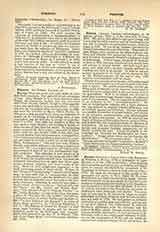

Forrest, WILLIAM, priest and poet; dates of birth and death uncertain. Few personal details are known of him. He is thought to have been related to John Forest, the Franciscan martyr, and was connected with Christ Church, Oxford, though in what capacity is not clear; probably he was a student there. It is certain that he was present when the university, in 1530, discussed the question of Henry VIII‘s divorce; he also gives a long account in his poem on Catherine of Aragon of the rebuilding of the college when it was remodeled, and we find him in receipt of a pension from it in 1555. Soon after the accession of Mary he was made a royal chaplain, but nothing is known of what became of him after her death. An interesting entry occurs in the State papers (domestic) of Elizabeth, under the date December 23, 1592, to the effect that a certain Robert Faux being examined, confessed that “3 or 4 years since he had given a gray nag with a saddle and bridle to Forrest, a priest, at an ale house in Stoke, Northampton”. This may have been William Forrest, and points perhaps to his being a fugitive at the time. He was a skillful musician and collected the manuscripts of some of the best contemporary English composers. This collection is now preserved in Oxford. The greater part of his poems are still in MS. None of them are of great poetical merit, but some are extremely interesting from the light they throw upon certain political, religious, and social events of his time. There are some enlightened suggestions in his work concerning points of social reform. Warton, in his “History of English Poetry”, remarks that Forrest seems to have been able to “accommodate his faith to the reigning powers”, and the statement rests upo ti Benedictines had their com-studylouse. Shortly thg fact that he dedicated two of his works to the protector Somerset. Otherwise he seems to have been a loyal Catholic. Forrest’s works are: “History of Joseph the Chaste” (in MS., Oxford and British Museum); “The Pleasant Poesie of Princely Practice” (in MS., British Museum)—a long extract from this poem is given in “Starkey’s Life and Letters” (see below); A metrical version of certain Psalms and Canticles (in MS.); “A New Ballad of the Marigold”, in praise of Queen Mary, printed in the “Harleian Miscellany”, vol. X; “The History of Grisild the Second”, a long poem upon Catherine of Aragon and her divorce, published entire by the Roxburghe Club (London, 1875), with memoir by the Rev. W. H. Macray; “The Life of the Virgin Mary”, and other poems (Harleian MS., 1703).

